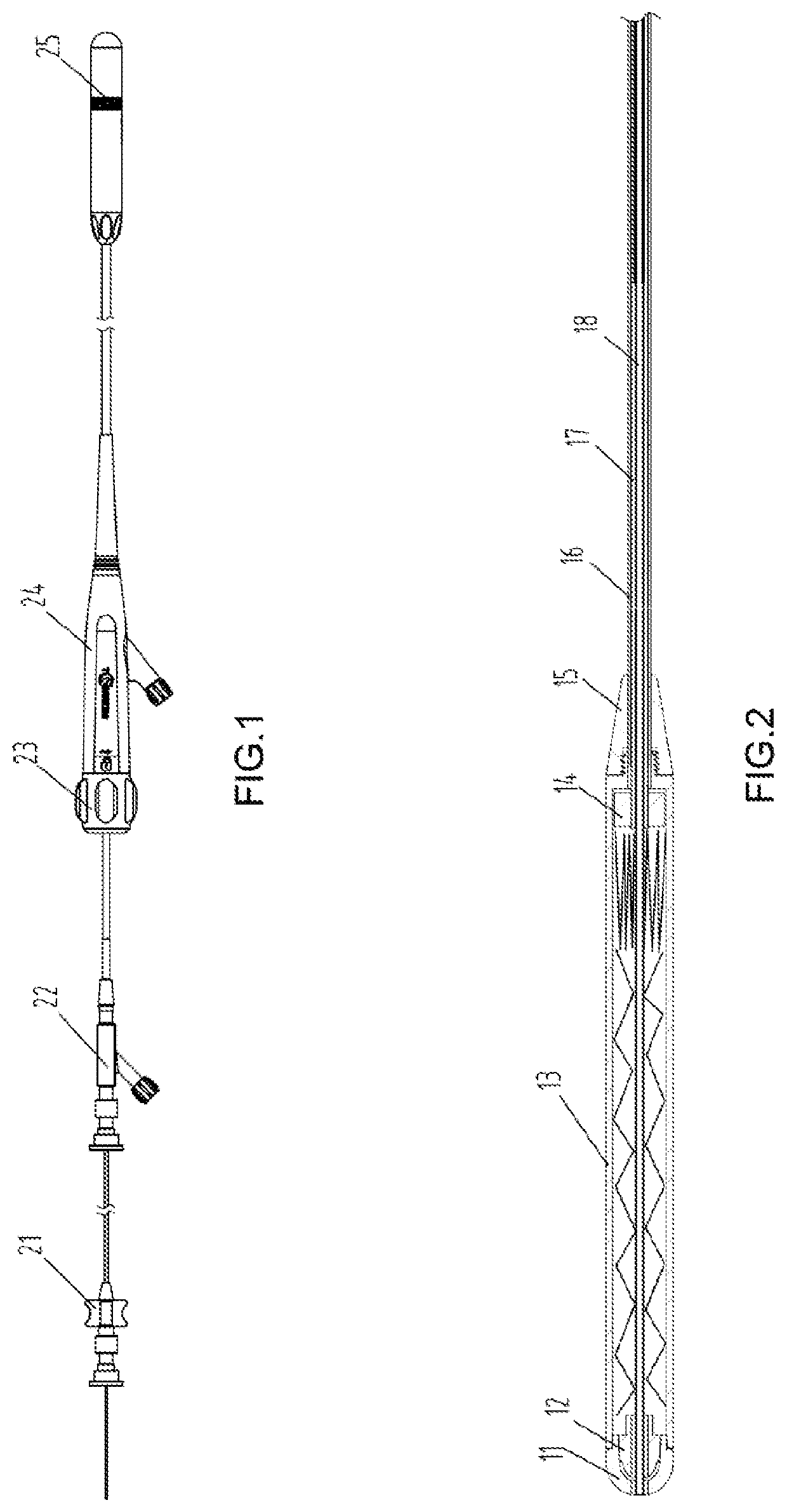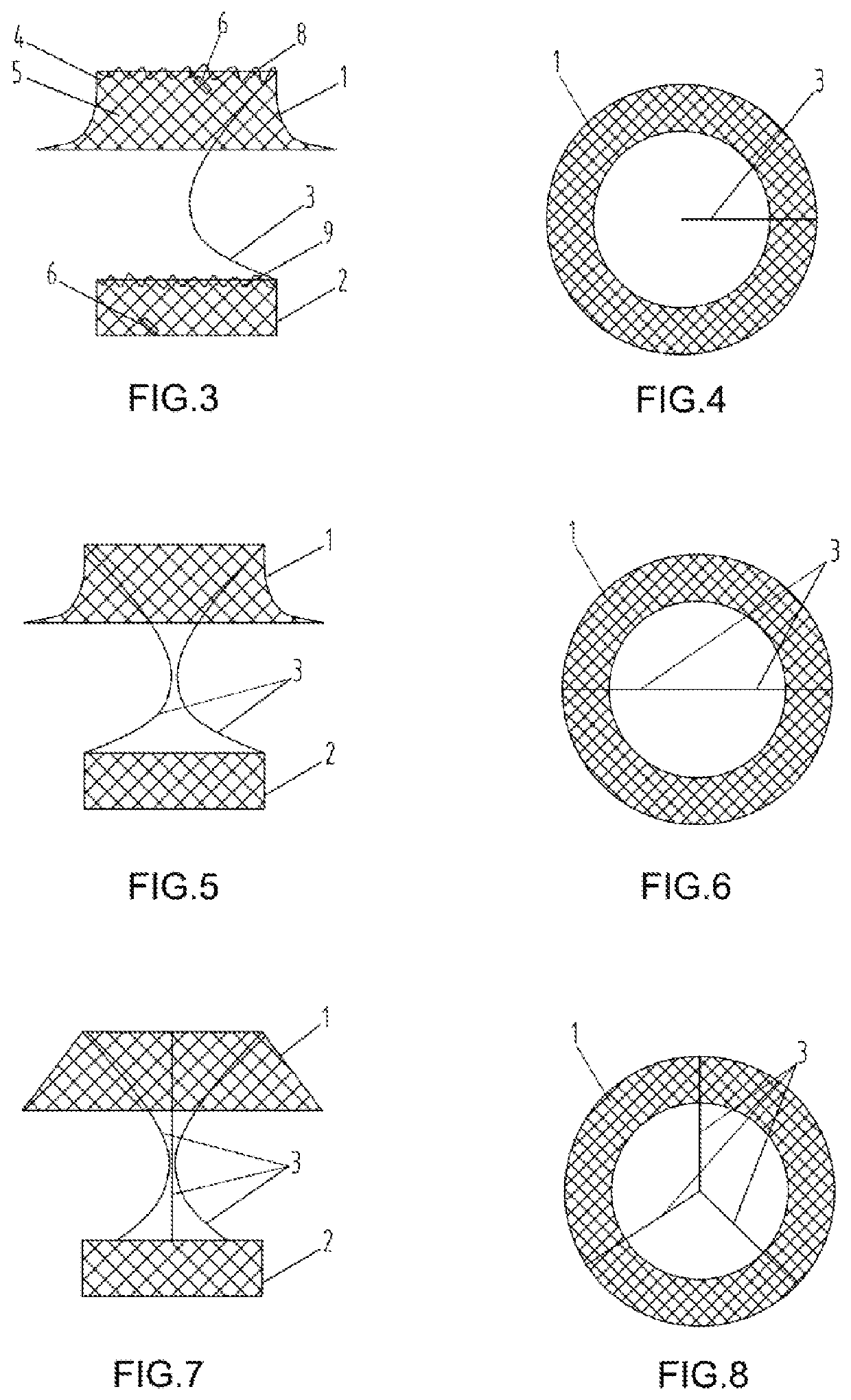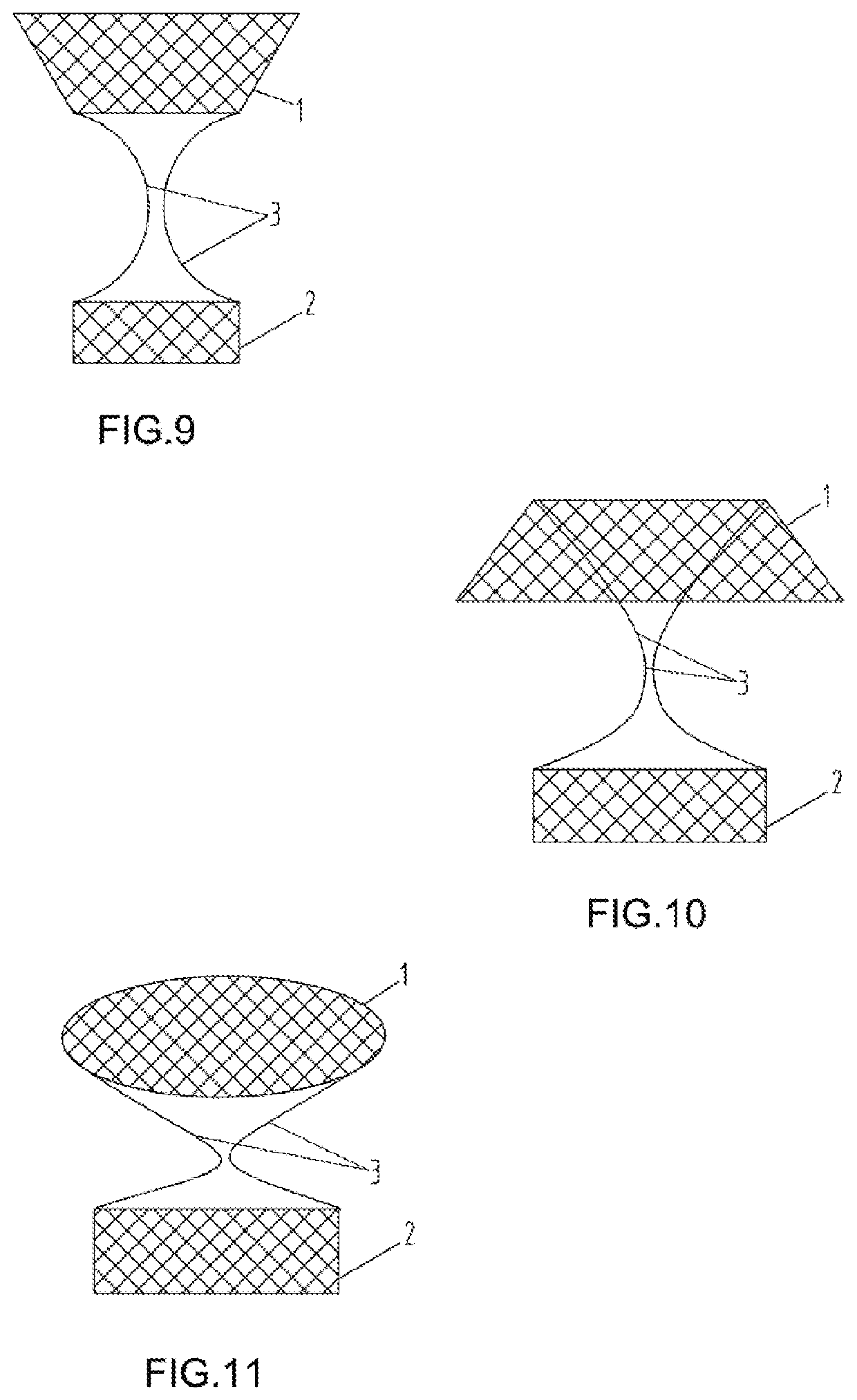Diabetes may lead to chronic damages and dysfunction of various tissues, especially eyes, kidneys, heart, blood vessels, and nerves.
Diabetes is usually accompanied by
obesity and many complications, which
pose great threats to people's health.
However, this requires long-term persistence of patients, and relapse and weight regain are easily caused once diet control and exercise are stopped.
Long-term administration of drugs or
insulin also causes a heavy financial burden and inconvenience to the life of patients.
However, the
gastric bypass surgery which is a surgical procedure may cause wounds in human bodies, and thus is associated with many risks, such as death, intestinal obstruction,
anastomotic leakage,
pulmonary embolism,
deep vein thrombosis,
portal vein injury, risks in the
respiratory system, etc.
However, the gastric diverter has a complicated structure, and it is usually necessary to simultaneously operate multiple pull wires to achieve its function.
An operator without rich experience may make an error in operation, increase discomfort of the patient, and thus have difficulty in operation.
In addition, the gastric diverter is manufactured at high cost, and there is an additional problem of technical barriers.
As a result, its widespread application in China is very difficult.
Therefore, it is an urgent problem to be solved how to provide a method for treating diabetes that is carried out without causing much discomfort to a patient, or how to provide a device for treating diabetes with a simple structure, convenient operation, and low cost.
However, if a mesh
stent made of a currently known material is not covered with a membrane,
hyperplasia and adhesion are likely to occur, and it is difficult to remove the
stent after it is implanted for a period of time.
A stent covered with a membrane is very likely to fall off.
This design has the
advantage of being adaptable to most patients, but there are also certain problems, because a design with too long barbs will cause perforation of the digestive tract while a design with too short barbs is likely to fall off.
According to the clinical documents from the American GI companies, the design falls off at a rate about 10% in clinical use, and tearing and bleeding of the digestive tract will be caused at a certain percentage in the case of its removal, implantation, and accidental falling-off, therefore there is a certain risk in its use.
If the
catheter accidentally falls into the distal
duodenum,
jejunum, or even colon, intestinal obstruction is easily caused.
However, the above-mentioned intragastric device has the following problems.
Firstly, the self-expanding memory
alloy material has a certain
mechanical force and weight, thus the intragastric device with a size large enough to occupy the internal volume of the
stomach will apply a certain pressure to the
stomach and will oppress the
gastric mucosa and is very likely to cause ulcers of digestive tract when implanted in the
stomach.
Secondly, food stays in the
balloon for a long time.
Thirdly, the device is not fixed in the pyloric orifice or in the
duodenal bulb, thus the lower extended membrane tube is very likely to move back into the stomach due to the reverse
peristalsis of the digestive tract, causing food not to flow according to the designed channel.
Fourthly, the membrane tube located at the pyloric orifice has a relatively
large size and thus may lead to an obvious
foreign body sensation in the
pylorus and may easily cause conditions such as poor closure of the
pylorus and bile regurgitation, especially after food is contained therein.
It is generally implanted as an independent product into the digestive tract without being connected to a membrane tube, and cannot be used in the pyloric orifice of the stomach or as a gastric diverter because of its high supporting strength and difficulty in deformability.
 Login to View More
Login to View More  Login to View More
Login to View More 


